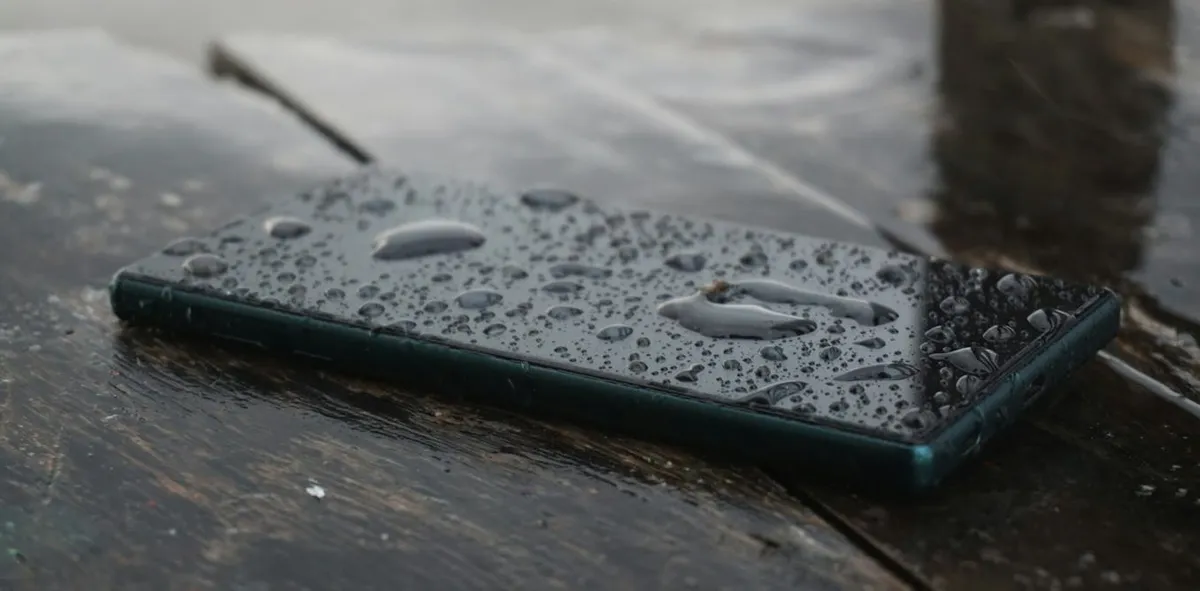
We've all been there: the heart-stopping moment when your smartphone slips into the toilet, or you forget to remove your smartwatch before diving into the pool. Perhaps you accidentally tossed your earbuds into the washing machine with your laundry. What should you do next? The internet is filled with advice on how to dry out your soaked device, yet many myths surrounding liquid protection and repair can make it difficult for consumers to discern fact from fiction. In my research, I focus on how technology influences daily life, and my new book, “License to Spill: Where Dry Devices Meet Liquid Lives,” delves into the complexities of how we perceive and manage our electronic devices in wet situations. Here, we’ll explore five common myths about getting devices wet.
It's a relief when your device powers back on after suffering a liquid mishap, but this can be misleading. What you can't see are the subtle yet damaging processes occurring inside your device, such as corrosion. Moisture can lead to the degradation of metal components, and this deterioration often unfolds over time—sometimes days, weeks, or even months after the incident. Even humidity from a damp climate or steam from a hot shower can have lasting effects, despite the initial relief of seeing your gadget boot back up.
The term “waterproof” is often misleading. In fact, the Federal Trade Commission has strict regulations regarding its use in advertising, and even banned it from promotional material for wristwatches. Given this ambiguity, it's essential to familiarize yourself with different water resistance standards, such as ingress protection (IP) ratings and MIL-SPEC ratings for watches. Always read the fine print to understand what these ratings actually cover.
Manufacturers often promote high IP ratings to attract buyers, but it’s vital to understand that these ratings typically reflect resistance to fresh water only. If you’re concerned about spills from hot tubs or sticky soda spills, there’s no guarantee that your device has undergone testing in these real-world scenarios. An IP rating may not account for these types of challenges, leaving your device vulnerable.
When an accident occurs, it’s natural to want a quick fix. Many people believe that placing a wet device in a bowl of rice will absorb moisture effectively. However, this method is not only inefficient but can also lead to further damage as rice particles may infiltrate the device. Instead of relying on this common kitchen hack, it’s advisable to immediately power down your device, remove its battery (if possible), and allow all components to air dry for a day or two. Seeking help from a professional repair service is the best course of action.
Finding comfort in the idea of a warranty might seem like a safety net when your device suffers liquid damage, but proceed with caution. Most standard consumer technology warranties do not cover liquid damage. Typically, you need to purchase an add-on warranty known as Accidental Damage from Handling. Even these policies may limit the number of “wetness incidents” you can claim in a year, putting you at further risk.
While recent advancements have improved water resistance features in devices such as laptops, tablets, smartphones, and smartwatches, consumers still face challenges. Marketing claims, complex classification systems, and restrictive policies can complicate the purchasing experience. Manufacturers must ethically consider how their products are designed, marketed, and serviced. Water resistance should not be an exclusive feature for industrial or outdoor use; instead, it should be a standard expectation for all consumers.
It’s unreasonable to expect consumers to navigate their daily lives with extreme caution around devices that provide essential resources and social connectivity. Manufacturers should avoid overstating the capabilities of their products. For example, Samsung Australia faced a hefty AU$14 million penalty for misleading claims regarding the water resistance of its smartphones. While it may be entertaining to see celebrities like Lil Wayne splash smartphones in commercials, manufacturers should not promote practices that they caution against.
Ultimately, life happens around our devices—whether it’s in the shower, kitchen, gym, or at the beach. Therefore, it’s crucial to advocate for fairer repair policies and warranties that don’t penalize consumers for the occasional mishap. After all, we are all just one splash away from a potential crisis.